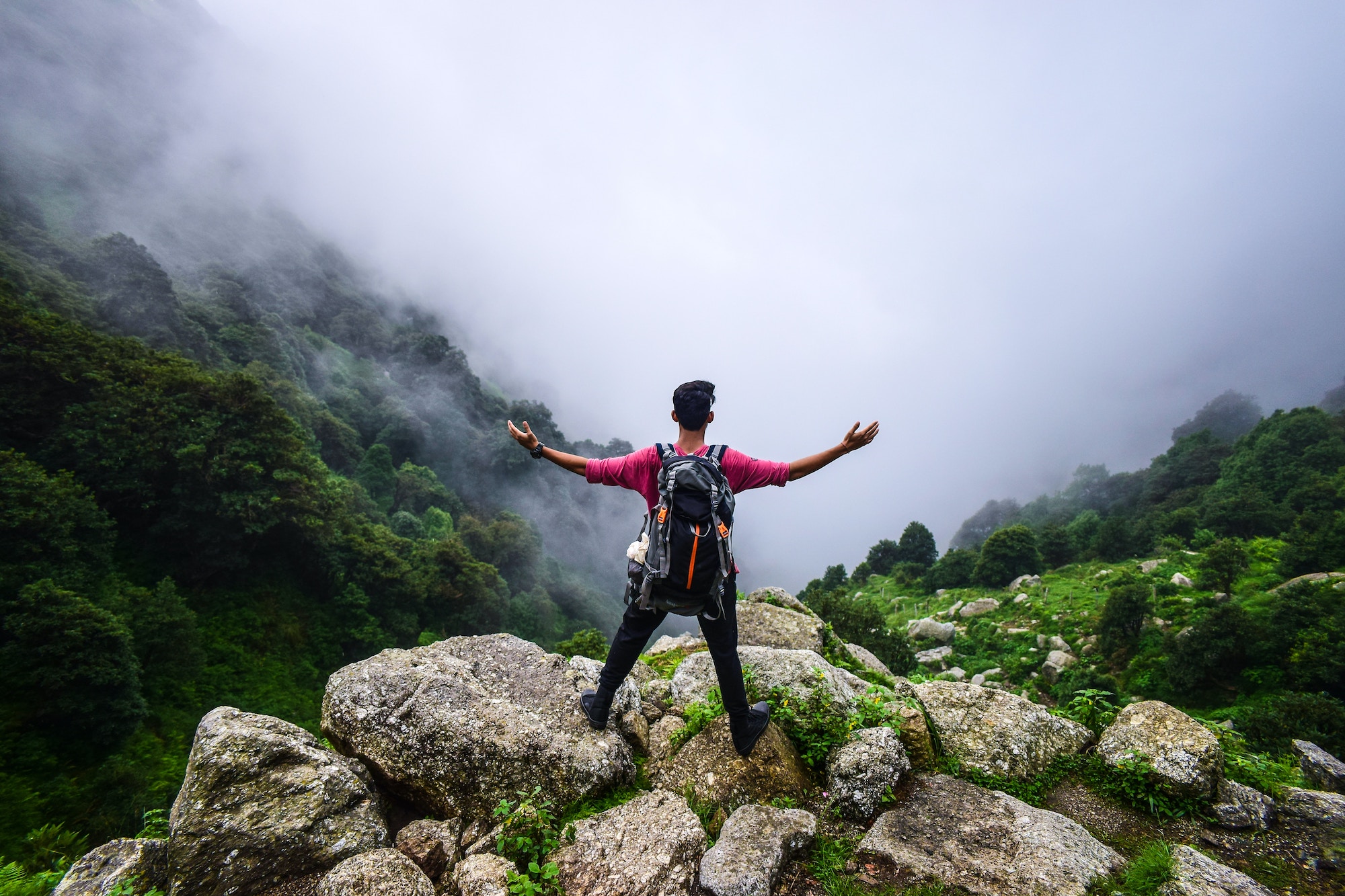Have you ever gone to a natural or human landmark and watched as the crowds jockeyed for some ideal photo op, only for each would-be photographer to scamper away as soon as the picture was taken? Maybe you have been this person who only pauses for a second wherever you go? Well, if so, you certainly aren’t alone, but why not try and change that habit? Practicing mindfulness in the mountains and elsewhere in nature can improve your mental and emotional well-being by teaching you how to become more centered and calm.
In fact, one exciting study showed that meditating and practicing mindfulness can change how your brain works in just eight weeks. This study showed that practicing mindfulness creates changes, measurable changes, in areas of the brain associated with empathy, memory, sense of self, and stress. These are significant improvements that should have everyone clamoring to learn more about meditation. Meditation and practicing mindfulness is something anyone can do at any location, but doing it outdoors enables one to improve that brain activity while also soaking in the beauty and wonder of the natural world around us.
How to Be Mindful in the Mountains: Meditation and Well-Being Guide
People sometimes have it that meditation must look a certain way. For most, meditation means sitting very still and quiet in a pretzel and letting one’s brain go completely blank. And while yes, this is a popular form of meditation, it isn’t the only form. Meditation by definition is any practice an individual uses to focus their mind and train their awareness. Mindfulness is meditation with the aim of focusing one’s mind on the natural world around them. Mindfulness teaches one to be present and aware of the surrounding.
Walk With Focus on the Ground
Walking is an activity that we almost always do without thinking. You simply get up and start moving and without constant, conscious direction, your legs and feet take you to where you want to go. It is easy to see how we take this for granted.
The next time you are out in the mountains and forests, choose to be conscious and mindful of your walking. As you take each step, take a moment to feel the ground beneath your feet. Consider it. Does it give some with your footfalls or do your shoes sound like drum beats against it? Go slowly and allow yourself to feel how your steps connect you to the earth beneath your feet. You might also sit somewhere, take off your shoes, and let your toes sink into the dirt, sand, or whatever ground lies beneath you.
Look Before You Snap
Pictures are incredibly valuable as they provide us with a visual memory token of a place and time where we once were. While some people can readily recall their memories, for others, looking at an old photograph is an incredibly valuable tool that helps bring a memory back into sharp focus. But for the best effects of photographs as memory aids, first, you need to learn how to be truly present in the moment in which you snap your picture.
Start being present before taking photographs by standing still and contemplating the landscapes around you. Look at how the light and shades play across the landscape. Watch how the winds play with the clouds and shake the canopies. As you prepare to take a picture, really consider the intention of your photograph. What color or thing really interests you? Is there a story here you can tell? Could you tell that story or capture the light and shadows before you if you take your photograph from a different perspective?
Bring a Notebook
If you are having a hard time being mindful in nature, in that you struggle with staying calm, silent, and still for reflection, then consider bringing with you a notebook and pen or paper the next time you traipse into the mountains. As you hike the trails or meander around a unique natural landmark, add in pauses. Take a moment to open your journal and write down what you see, hear, and feel. Your notes do not have to be complicated, they can just be phrases or words strung together. If you prefer drawing, do so.
While journaling these aspects of mindfulness may feel silly, especially at first, writing and drawing will help focus your mind. To draw or write thoughts requires observing and focusing on the nature around you as you translate what you see, hear, and feel into words that are then translated again to paper. This process helps one become a better observer and thereby more present and mindful of the moment they are in.
Leave the Electronics and the Big Plans in the Car
The enemy of mindfulness is distraction and distraction can, unfortunately, take many forms. Distraction is when you can’t stop looking at your phone, scrolling through social media or constantly texting a friend. Distraction is also when you have a fully booked day and are thus forced to rush through each and every stop on your travels.
Avoid allowing distractions to interrupt your practice of mindfulness and meditation by disallowing them the opportunity. Leave your phone in your vehicle or, if you must have a phone in case of emergencies, put it in airplane mode. Additionally, make sure to give yourself time to just be in all of your travels. Avoid hard time limits and allow for space to breathe.
Begin Being More Mindful on Your Travels Today
It is never too late to start a new habit or to pick up an old one. Make today the day you start practicing how to be more mindful and present on your travels, wherever they take you. Going outdoors and exploring the world is a wonderful way to start with meditation as it provides serene backdrops far and away from modern distractions. For some fantastic suggestions on outdoor locations, browse our websites and head out to the next trail that calls you.




